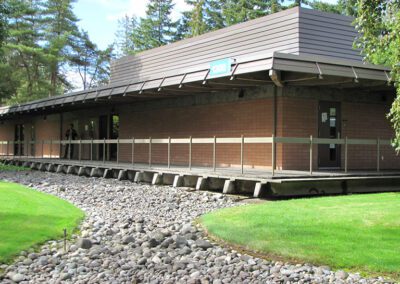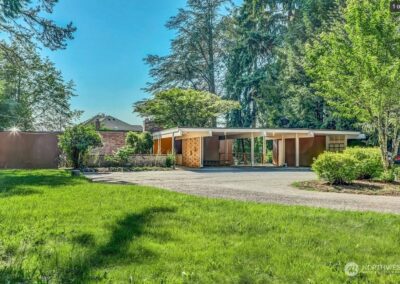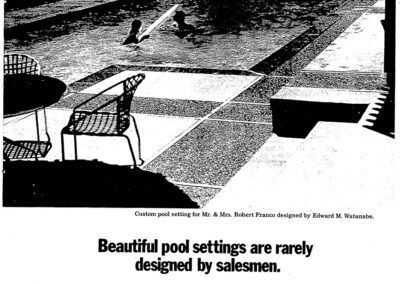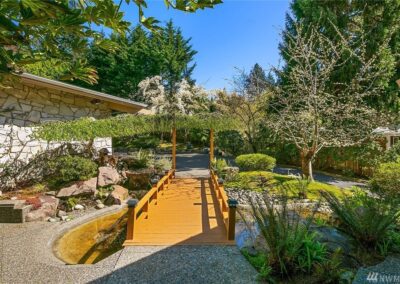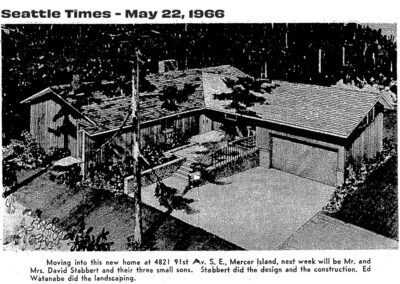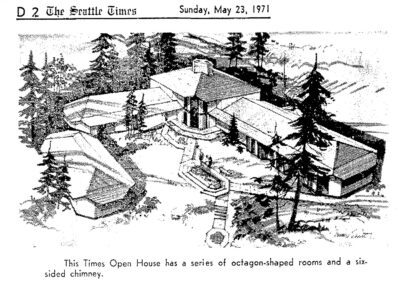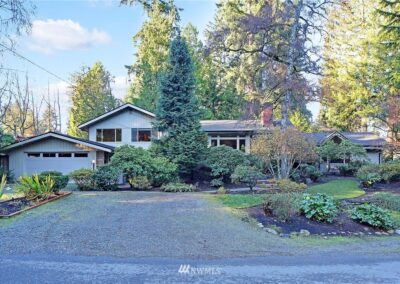
Watanabe, Edward M.
(1920 – 2018)
Landscape architect Edward Makoto Watanabe was born in Seattle to Japanese immigrants on August 23, 1920. His father, Masahei, was a hotel owner and operator who had immigrated to the United States in 1917. Edward started his career by working as a gardener while still in high school. Upon graduation he earned an “Ornamental Gardening Certificate” from Edison Vocational School (now Seattle Central College) in 1942. Shortly thereafter he took a job at Bainbridge Gardens, a nursery and show garden, which, before WWII was considered a must visit showplace when visiting the Island.
His time on Bainbridge Island however was short with the issuance of Executive Order 9066 which forced the removal of all Japanese Americans from the west coast due to the perception that they were security risks after the bombing of Pearl Harbor. Edward (then age 22), along with his mother and father, and his four siblings (who were in Seattle) were sent to Minidoka Prison Camp in Jerome, Idaho. In total, over 120,000 people would be sent to “relocation camps” during the war years, despite the fact that nearly two-thirds were legal U.S. citizens.
After spending six months detained in southern Idaho, Edward was sent to work in Spokane in May 1943. However, his parents remained incarcerated for the remainder of the war. In April of 1944, like many legal Japanese Americans, Watanabe volunteered to enlist in the U.S. Army. After training as a medical technician, he joined the all-volunteer Japanese American Infantry’s Service Company 442nd. He earned his medical badge in August 1945 and served in Italy.
After being discharged, Watanabe returned to Seattle where he married Toyoko Hasegawa in August of 1946. The couple then relocated to Corvallis, Oregon where Watanabe, using the G.I. Bill, enrolled at Oregon State College in 1948. After graduating with a Bachelor of Science from the School of Agriculture in May of 1952, Watanabe and his family returned to Seattle in the mid-1950s where they lived for the remainder of their lives.
Watanabe opened his own independent firm in 1958 and maintained a highly successful career in landscape architecture that spanned over 40 years. While he primarily designed landscapes for high-end single-family residences, he also worked on multi-family, commercial, and institutional buildings. In doing so, he collaborated with many of the region’s leading architects and many of his projects were featured in local and regional newspapers. Watanabe was active in the Washington Society of Landscape Architects, first serving as secretary (1963), and then Vice President (1965).
Notable residential projects include architect Benjamin McAdoo’s own house at 17823 88th Ave, Bothell (1958); the Robert W. Austin House, 6855 West Mercer Way, Mercer Island (1959, with Lawrence & Hazen, Seattle Times Home-of-the-Month – June 1959); the Samuel Stroum House, Mercer Island (1962, with Tucker & Shields); the J.M. Scovills House, Maple Creek (1963, with Lawrence & Hazen); architect Reid A. Morgan Jr.’s own house at 3853 81st Avenue SE, Mercer Island (1965, Seattle Times Home-of-the-Month – May 1965); the Dr. Lowell Eddy House (1966, with architect: Paul Hayden Kirk); the Pon Eng House at 5029 W Mercer Way (1966, with Wilkins & Ellison, Seattle Times Home-of-the-Month – Jan 1966); the Robert and Gerd Jones House at 844 se 82nd St, Mercer Island (1966, with architect Ralph Anderson); architect Henry Steinhardt’s own house on Mercer Island (1969); and the Dominic D’Angelo House at 7018 150th Pl , Lynwood (1966, with E. Stuart Klein, Seattle Times Home-of-the-Month – Oct 1968).
Some of his known residential design work includes the Gordon-Anderson Medical Clinic, 1409 NW 85th Street, Seattle (1962, with Blaine McCool & Associates); all of the landscaping at Shoreline Community College (1965, with architectural firm Steinhart, Theriault & Anderson) and Green River Community College in Auburn (1965, with Sullam & Aehle); King County Administration Building, 500 4th Avenue, (1971, with Harmon, Pray and Detrich); and the Kent Branch of the Westside Federal Savings (1972, with Steinhart, Theriault & Anderson).
Edward Watanbe passed away in Seattle on December 17, 2018.
– Michael C Houser
Advertisement for Robert Franco House – Swimming Pool | Seattle
Built 1967 | Source: Seattle Times – May 11, 1969
